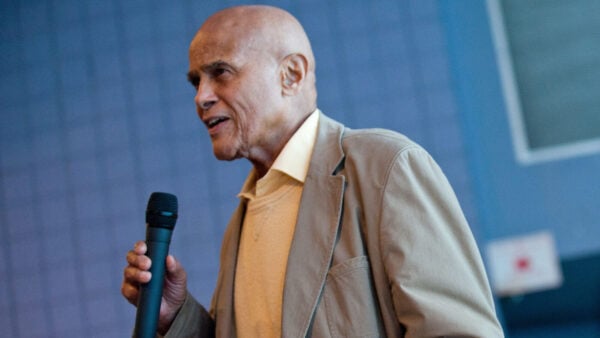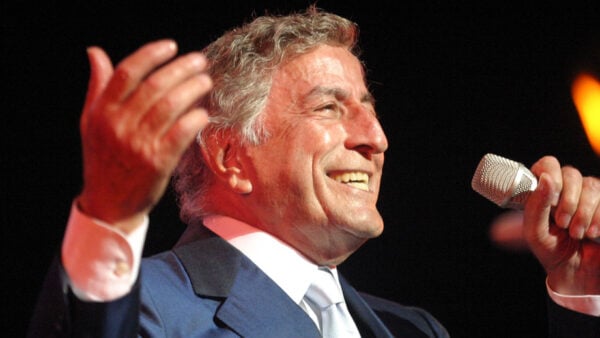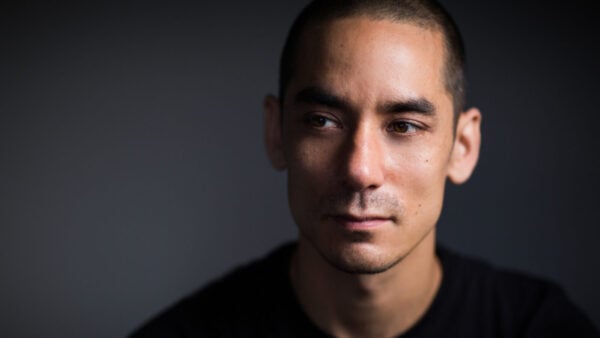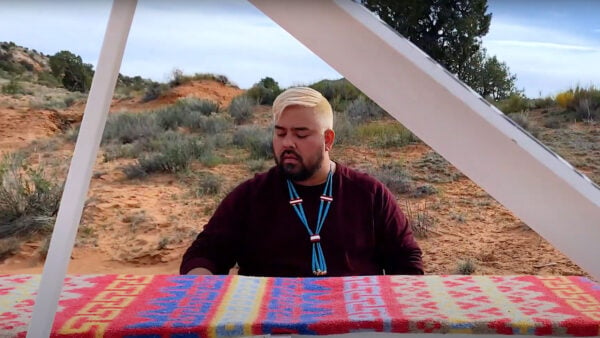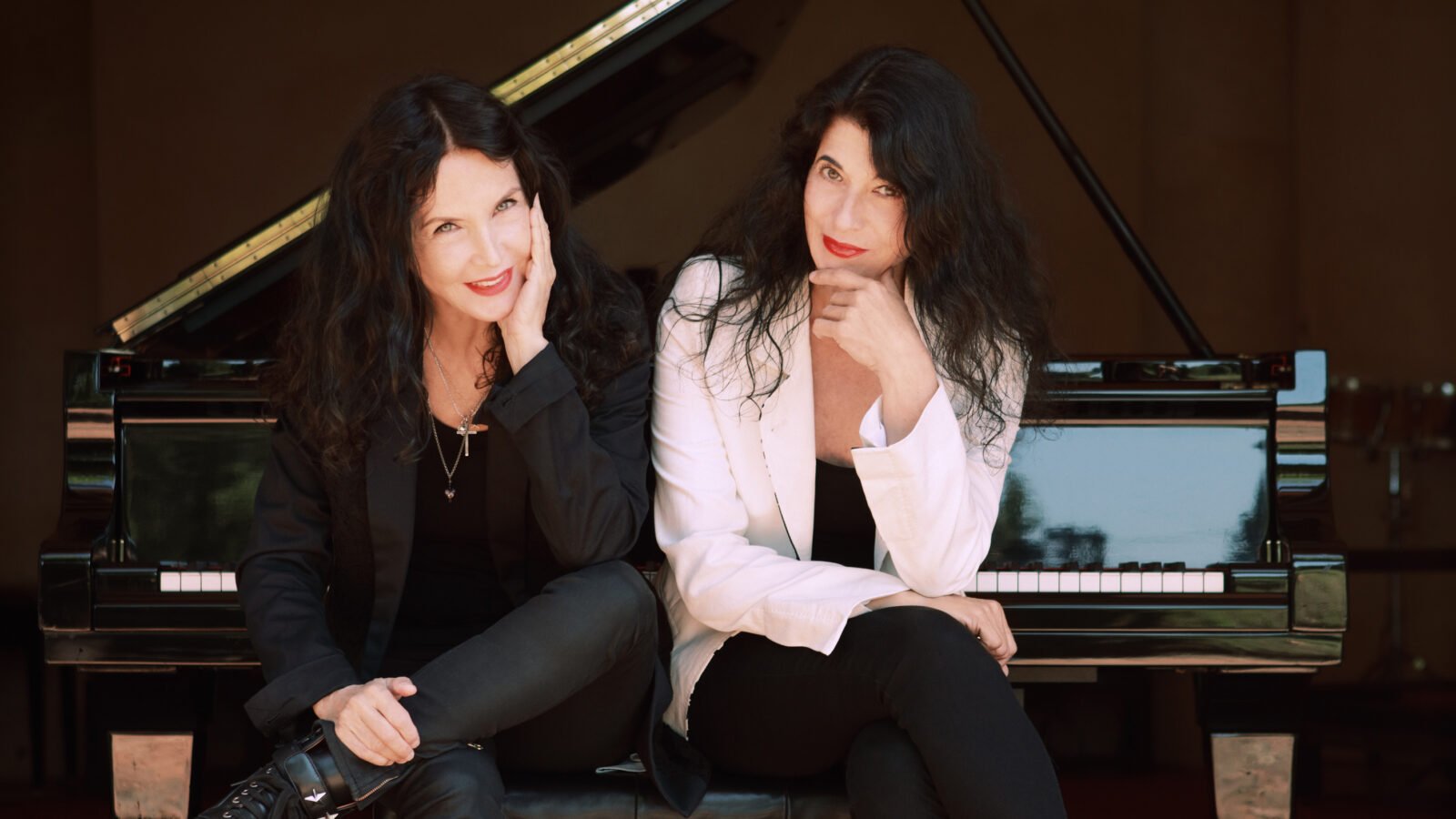
Pianists Katia and Marielle Labèque (Photo: Umberto Nicoletti)
Pianists Katia and Marielle Labèque rose to international fame when their two-piano recording of Gershwin’s Rhapsody in Blue became one of the first classical albums to go gold. “We could have very easily ended up playing Rhapsody in Blue our entire life, because people would always be happy with that,” Katia said in a dressing room at Chicago’s Symphony Center. “And it does not mean we do not love Rhapsody in Blue, we are going to play it again in July after however many years, and we’ll be really happy to play it!”
“We always had to bring some other project, some other vision,” Katia continued. “And we can do that because we do not have Mozart’s 27 concertos to learn, nor Beethoven’s Piano Concerto No. 5. Our repertory is very limited, but that has allowed us to construct a different repertory and present different projects and visions. With solo pianists, it’s not the same job.”
One piece Katia and Marielle have enjoyed playing, in particular, is Max Bruch’s rarely-performed Concerto for Two Pianos and Orchestra. They recorded the virtuosic concerto under the baton of Semyon Bychkov, who is also Marielle’s husband, decades ago, though have had few opportunities to perform it since. Now, they are thrilled to present the premiere performances of the concerto with the Chicago Symphony Orchestra, also led by Bychkov, for three concerts in Chicago May 3-5, 2018, before traveling to Iowa City for a single concert on May 6.
After their first rehearsals with the CSO, Katia and Marielle sat down to share their passion for performing gems like Bruch’s concerto, their love of new music, and how living composers have helped them find the freedom that fuels their artistry.
Rediscovering an – almost – lost masterpiece
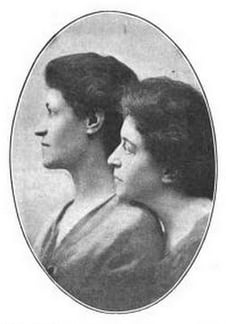
Rose and Ottilie Sutro in 1917
Katia: The piece [Bruch's concerto] had disappeared for years from all public knowledge. It was a commission for two American sisters – Rose and Ottilie Sutro. And indeed, at this time, Bruch was at the end of his life, he was very poor, and he accepted. Then the sisters started to make a lot of alterations: a lot of cuts because the piece is very, very difficult, very virtuosic, very difficult, and very difficult to play together with an orchestra. It’s really only fantastic orchestras like we have here in Chicago that can do it. Bruch was very upset, and he forbade them from playing this piece in Europe.
They did the premiere in Philadelphia in 1916 and they did another one in New York in 1917. Then they stopped playing it and pretended the piece did not exist. It was very strange — the piece even disappeared from the Library of Congress. It only re-appeared in the 70s, when the last sister died, and a pianist bought at an auction sale, a box for $11. And when he opened the box, he found the original manuscript for Max Bruch’s concerto for two pianos. He started to contact the other people who bought some of the boxes. He found some of the other parts, and with the help of some financial associations, they reconstructed the concerto, and finally they recorded it. Thanks to them, we heard about this concerto, and we heard their recording. In the 80s, we had the opportunity to record it with the Philharmonia Orchestra and Semyon [Bychkov].
Because the concerto was so unknown, it was not that easy for us to program it with the orchestra. We almost haven’t played it again since the 80s… because it was very difficult to convince promoters to take a concerto that they had no idea about. It’s only possible now because we have played so much of the repertory that we can have this luxury to come back with something totally new and totally unknown.
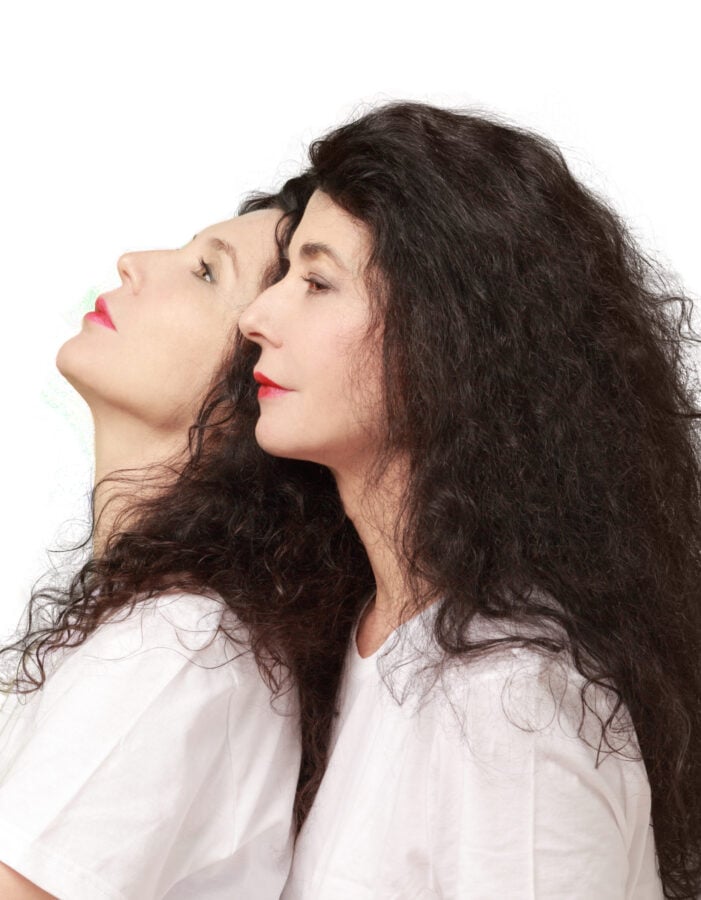
Marielle and Katia (Photo: Umberto Nicoletti)
Marielle: And I think the problem with this concerto is the dynamics, because it has really heavy orchestration –really too heavy. I think Semyon did a lot of work for the dynamics and he really changed the score. Because when the full orchestra is playing fortissimo, it just does not work. So I think there is really a way to make it sound good without making any cuts. It is not so easy to cut — everything is kind of logical. I don’t know where they cut, but it must have been really terrible.
K: Apparently the cuts they were doing were a disaster because the way they did it appeared like a gimmick. But it is really a masterwork, to the quality of the violin concerto I think.
M: It’s a really big pleasure to play it with the CSO, because they are so clear… They’re very, very strong rhythmically. This concerto, it has to be played like that, because if it becomes too boomy, then you cannot understand it.
K: At this time, Bruch really loved Mendelssohn, much more than all the Germans, even more than Brahms. Of course Bruch has moments where he is almost like Brahms, but his big love was for Mendelssohn. And we should always remember that in any case, in his time, the strings were gut strings, and not what we have today. The orchestra was certainly reduced, like what Semyon did. I think it’s important to keep all that in mind when we perform that, because it’s a lot of material, but if everyone starts to play loudly, we do not hear anything.
On championing new and forgotten works
M: We always did. We did it when we started with contemporary music, and we started with – Luciano Berio and Pierre Boulez. We always had an interest in contemporary music.
K: We always had to fit in our epoch. I love to play classical music. It’s great to have candles in your home, but it’s also great to push a button and turn the lights on. So we live in this kind of epoch of style, and we always had a fascination for great musicians who were not coming specifically from our roots. I was lucky to meet Miles Davis, all the great jazz pianists, Herbie Hancock, Chick Corea when I was living with John McLaughlin. And now we’re lucky to be around all of these young musicians. We also have a band. We worked on this project called “Minimalist Dream House” which covered 50 years of minimalist composers. Now we’re going to do a new version of that with a quartet with the fabulous composer Bryce Dessner. Bryce is part of the rock group the National. He’s also a fantastic composer — he just wrote a new piano concerto for us — Concerto for Two Pianos and Orchestra — that we played with the London Philharmonic Orchestra just before coming to Chicago.
Now we’ve created a quartet — two pianos, two guitars — with a lot of what we call “post-minimalist.” For composers who were born after Steve Reich, Philip Glass, Terry Riley, so like Nico Muhly, David Lang, Bryce Dessner. We are very lucky to be inspired and helped by those musicians. I think all our life, we’ve done that. Musicians have inspired us and we’ve wanted to participate in their projects. We managed to convince Thom Yorke to write for us. The world premiere is going to be in Paris in April 2019.
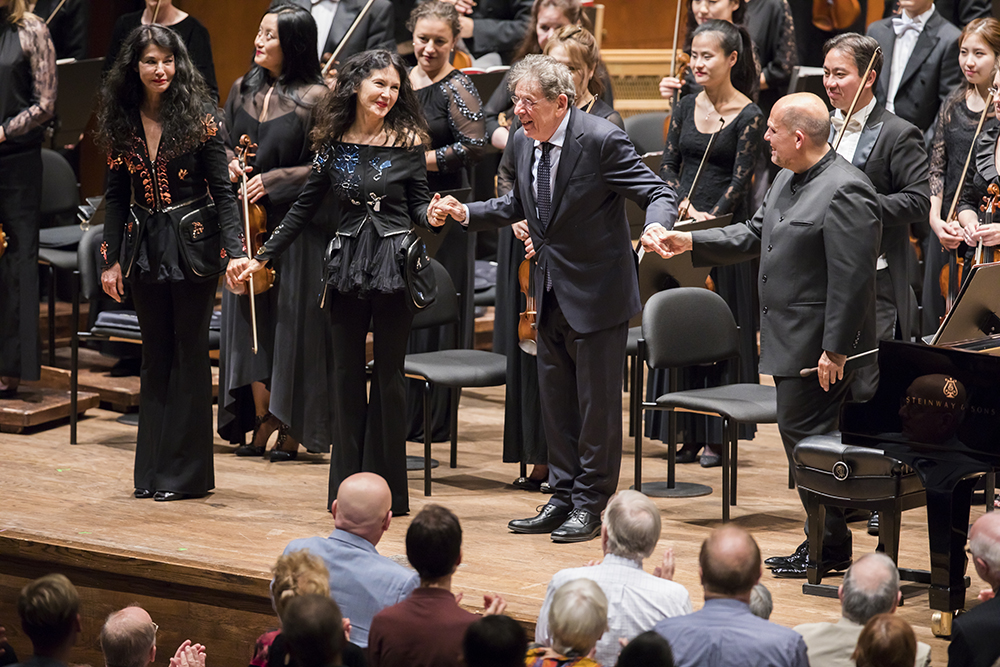
Katia and Marielle Labèque bow with Philip Glass and Jaap van Zweden after the New York premiere of Glass's Concerto for Two Pianos and Orchestra with the New York Philharmonic (Photo: Chris Lee)
M: Philip Glass wrote a concerto for us. It was a nice meeting we had. I really like him a lot as a person. I love his book. He tells you so much about his life and his knowledge of so many different topics — theater, cinema, architecture. It’s amazing. It’s amazing what he did — sleeping outside to be sure to have a ticket to the Shakespeare company. Nobody would do that today. When I read the book, I felt it was written 200 years ago. He’s not so old, but he came to Paris on a boat! Americans were not flying as much…
He was very very nice to meet. He heard us playing Four Movements, which he wrote. It’s a fantastic piece for two pianos. He liked it so much that he wanted to write us a concerto. So we have done that piece quite a lot now. Recently in Dallas with Jaap van Zweden.
K: We also did it in New York, and that was amazing because Philip had never been played by the New York Philharmonic… So when he opened the season last September, Philip was present. It was amazing. He came onstage to a huge ovation.
M: Even for the critics who do or don’t like him, it’s obvious he’s been here for years. It was very touching to see.
On the revolution of minimalism
K: For years we did not touch minimalist music because we were into Luciano Berio, Pierre Boulez, Ligeti. Berio, whom we adore, hated John Cage. He did not understand why someone so intelligent like John Cage would do so many stupid things. He was angry about this provocative side of John Cage. So because we loved Luciano, we stayed very far away from this type of music. It was only in 2011 that a friend of ours, Igor Toronyi-Lalic… [asked them to play at the 50 Years of Minimalism festival at King’s Place]. We said we’d never played any of those composers — but he said it didn’t matter. “I will bring you some scores — you can tell me what you like or not, and we would really like to do it around you.”
M: I was not sure that I wanted to do this project because I am always kind of suspicious. I need to look at music.
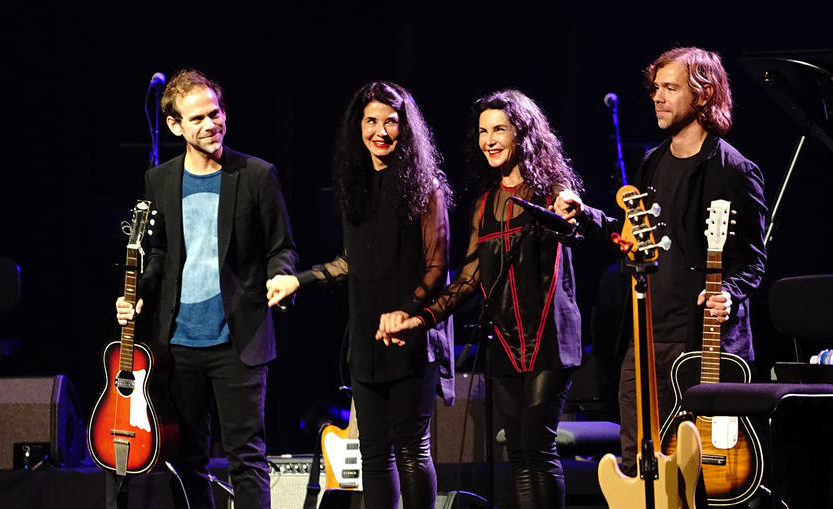
Bryce Dessner (left), with Marielle and Katia Labèque (center)
K: It opened a whole musical world — through Philip we met Bryce. When we created the concerto in 2015, on the same night, Bryce’s piece was played. And we were like “Who is this guy?” I had heard of him from his rock group but I had never heard of him as a composer, that was the first time. Caroline Shaw was also performing, and David Lang. It was very interesting for us… That’s a lot of discovery. We’ve done so much different music.
Marielle and I feel that minimalism — whether you like the term or not, will remain one of the greatest revolutions of the 20th century. When people had the courage to go back and do something harmonically understandable, rhythmically possible. People who came after Boulez and Berio, we thought, what is the point of playing this music that does not communicate with the audience. That’s why I love this young generation of composers, like Nico, like Bryce, because they really do something to communicate with their audience.
On working with Philip Glass
K: We first met him and it was so scary for us. We had had no time to meet him before, so we met him three days before the world premiere of the concerto. Suddenly he said, “Oh, for these few bars, you’re not playing anything! You should play something!” So he started writing this new part three days before the premiere. He started with his pen — “Ok that is for you, Marielle. Katia, I will write you that.”
M: He kept changing the second movement, we had two separate versions of it. When you have a date approaching and you don’t feel ready, it’s a bit nerve-wracking. But it is very beautiful because we would keep asking him things and he said “At the end, I am not here anymore. I wrote the concerto, but the piece belongs to you. You play so well.” Often the composer feels very free to change something. We disagreed on a few tempos, and he just said “Yes, of course, it makes sense like that.” So we changed it, and it was a big change to the score! Luciano was the same.
K: Composers are always more open.
M: That’s why we always love to work with them so much, because it’s so clear and it goes so fast. Instead of spending all your time trying to think of what the composer would have wanted. Or what critics think the composer would have wanted.
The most important thing they’ve learned from composers
K and M: “Freedom! Freedom.”
K: Freedom and acceptance of different points of view. They are not that rigid. As interpreters, we are always like chameleons because we need to fit whatever composer we play. Normally, composers are more rigid. They have to believe so strongly in what they do, they do not accept any contradiction. When it comes the moment to propose a different version of what they wrote, we are always granted the freedom of carrying the music elsewhere. It’s almost inevitable. The entire history of music has been written and has survived through its interpreters. Even if you write the most beautiful piece of music, but it stays in your room, it will not live on. So we know we have a possibility to give life or to bury a piece like the Sutro sisters did with the Bruch concerto. And lot of duos were deprived of this great work for many years.
It’s good when a composer gives us the freedom to go further.
Upcoming projects: baroque and beyond
K: With Marielle, each project is like a baby. It’s very special. Now we’re building, with my boyfriend, a new recording studio. That will be a huge project for us because that is also a form of freedom: to have our own record company, to be our own producers. The role of artistic producer was new to us because for years we had to support whatever producer was chosen by whatever record company. Nothing of the old records from years ago was our decision. It’s good that all the work we did during all those years allows us to go further now in the search of music and quality. With freedom, you can produce much better things. For us at least!
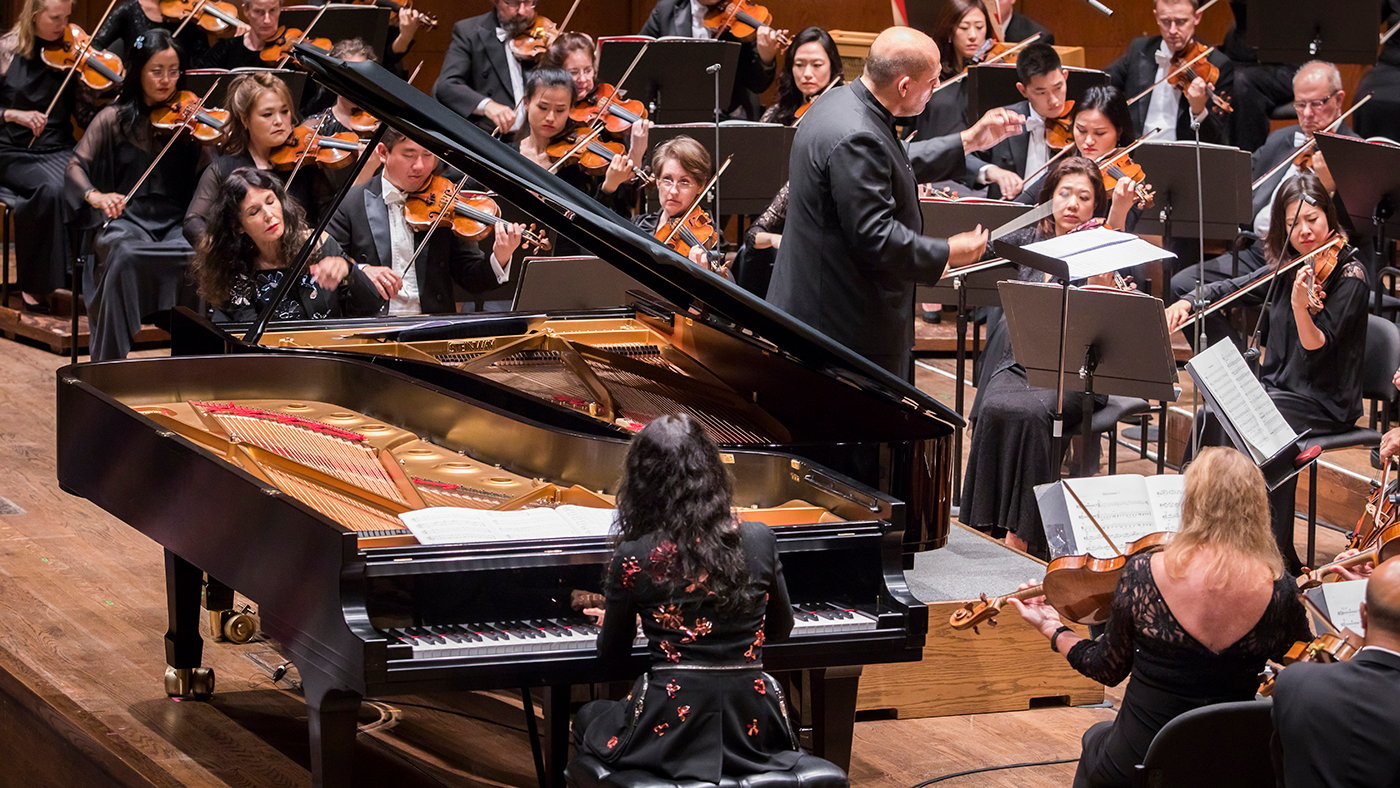
Jaap van Zweden conducts Katia and Marielle Labèque with the New York Philharmonic performing Concerto for Two Pianos and Orchestra (New York Premiere) by Philip Glass (Photo: Chris Lee)
We have three future projects. One is going to be out in September. It’s a project on Basque music — we come from the Basque coast. We discovered quite a lot of fabulous Basque musicians. We are doing a kind of parkour of the music from the 16th century up to today. We play the music from the 16th, 17th, 18th century with Baroque instruments. We are performing with countertenor Carlos Mena, Elena de Murguía, who plays viola da gamba. And then we go into the Romantic, … with Ravel of course who was Basque. And we end up with Alberto Iglesias, who is Basque and is the composer for the films of Pedro Almodóvar.
Then on my own, with David and my band, we have done a project on Moondog. And then the next one will be this minimalist quartet with Bryce Dessner and David Chalmin and then Thom Yorke from Radiohead. He has started to write the music for us and he might join us on stage. That’s amazing because Thom has been one of my favorite musicians for years. He doesn’t read music and he cannot write music, but the music just comes out of him in a way. It’s good to see that there are different ways to be a great musician. We have started to record little by little. The thing of having your own studio is that if we decide to re-record everything again before the CD goes out, we can.

